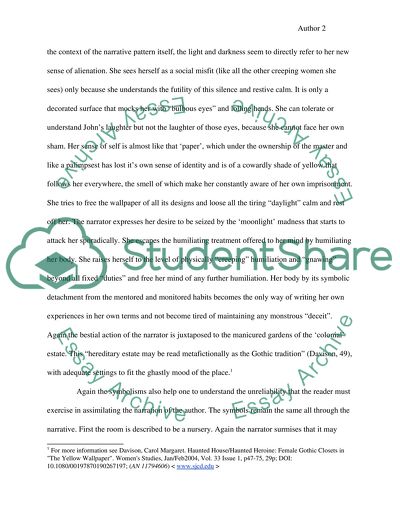Cite this document
(“Analysis of The Yellow Wallpaper Narrative Essay”, n.d.)
Analysis of The Yellow Wallpaper Narrative Essay. Retrieved from https://studentshare.org/literature/1520702-the-yellow-wallpaper-essay
Analysis of The Yellow Wallpaper Narrative Essay. Retrieved from https://studentshare.org/literature/1520702-the-yellow-wallpaper-essay
(Analysis of The Yellow Wallpaper Narrative Essay)
Analysis of The Yellow Wallpaper Narrative Essay. https://studentshare.org/literature/1520702-the-yellow-wallpaper-essay.
Analysis of The Yellow Wallpaper Narrative Essay. https://studentshare.org/literature/1520702-the-yellow-wallpaper-essay.
“Analysis of The Yellow Wallpaper Narrative Essay”, n.d. https://studentshare.org/literature/1520702-the-yellow-wallpaper-essay.


